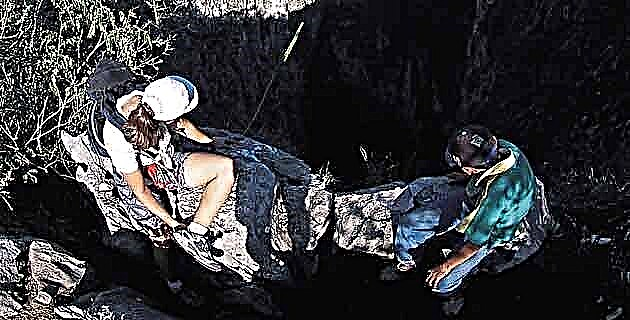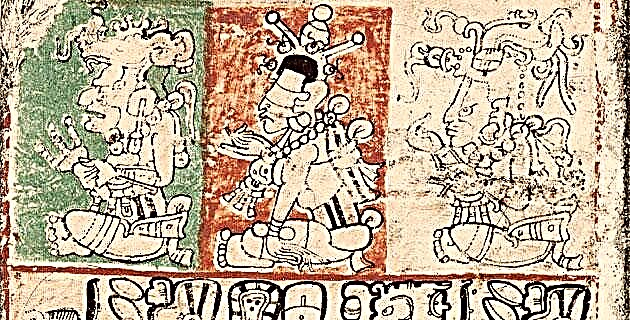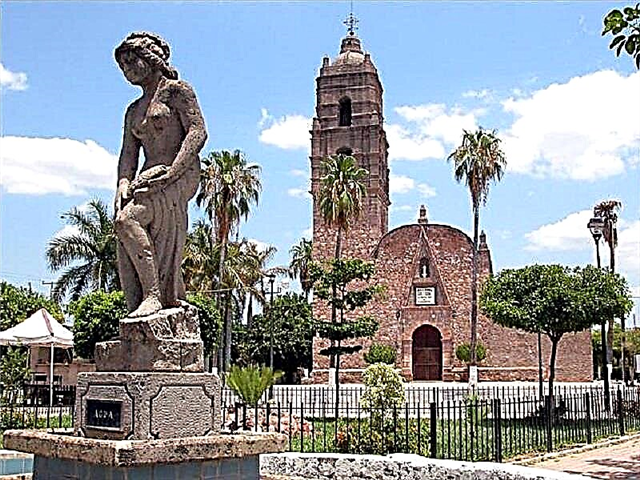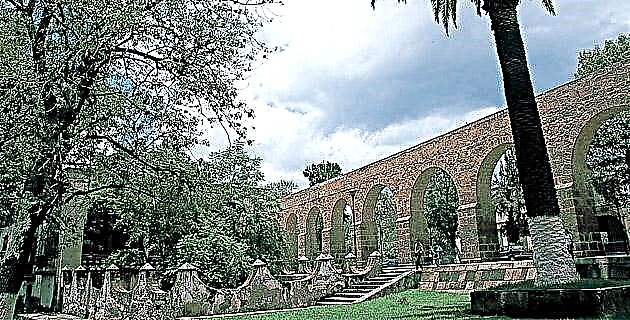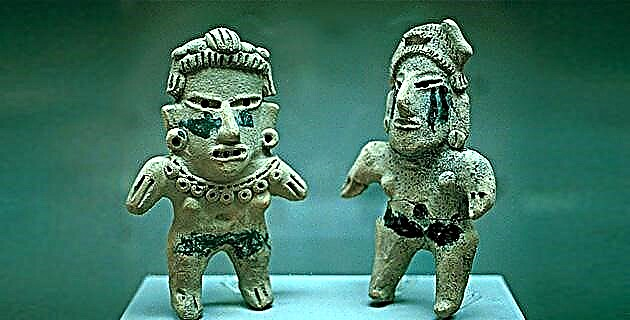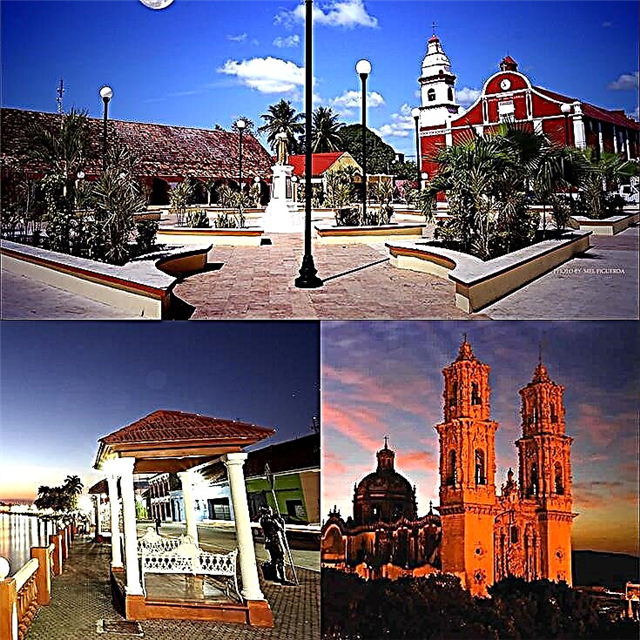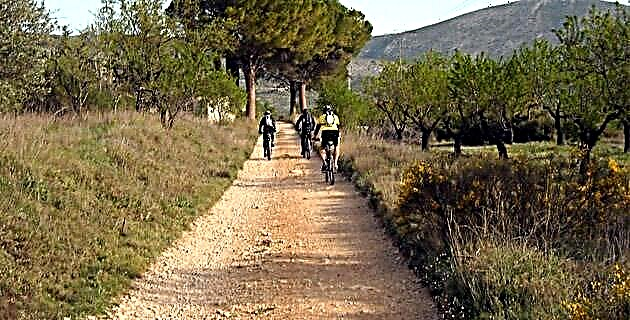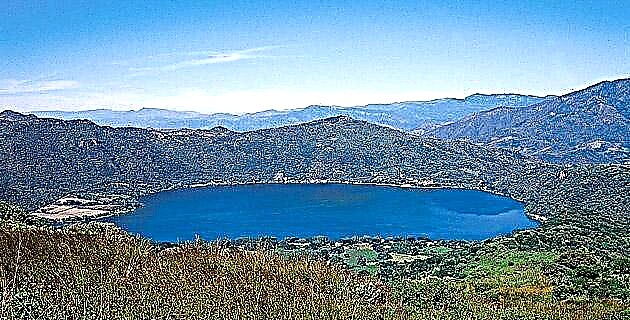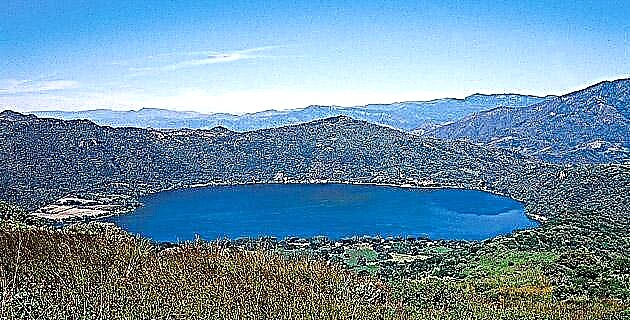
Nayarit has three lagoons of great interest and worth visiting: Santa María del Oro, San Pedro Lagunillas and Tepetiltic. Discover them.
Nayarit has three lagoons of great interest and worth visiting: Santa María del Oro, San Pedro Lagunillas and Tepetiltic. The Santa María del Oro is the most frequented by Nayaritas and Jalisco, because its calm waters allow swimming and the practice of water sports and in summer it receives the currents of the surrounding hills and countless streams in season. of rains. It has a semicircular shape with dimensions of 1.8 km in length and 1.3 km in width, with a perimeter of 2550 km, its waters are blue, with a steep slope and varied depth.
Around there are numerous restaurants that serve the exquisite white fish, as well as places to camp and even some cabins with a magnificent view of the lagoon.
Six kilometers away is the town of Santa María del Oro, which during the Colony was included in the mayor's office of the Chamaltitlán mines, a region that in the 18th century had three small gold mines and from where they are still mined today. small amounts of non-ferrous minerals.
The main temple of the town is dedicated to the Lord of the Ascension, it is from the 17th century, in a baroque style and an arabesque-style portal, although it has undergone modifications over time.
Already in the independent era, estates founded by Spanish families appeared; some like the Cofradía de Acuitapilco and San Leonel have practically disappeared; However, the Mojarras hacienda still stands and is an example of those of that time. By the way, near it there is a spectacular waterfall, the Jihuite, with three ridges, an approximate height of 40 m and whose receiving vessel has a diameter of 30 m; the characteristic vegetation is sub-deciduous forest.
The municipality of Santa María del Oro, with a hot humid climate with rains in summer and crossed by the Grande Santiago, Zapotanito and Acuitapilco rivers, has rich lands that produce tobacco, peanuts, coffee, cane, mango and avocado, just to mention a few. crops. 11 km away is the Tepeltitic lagoon, which is reached by a dirt road in good condition surrounded by exuberant vegetation, especially oaks and oaks; the fauna is made up of skunks, raccoons, coyotes, mud ducks and rattlesnakes. The locals are dedicated to fishing and raising livestock.
The majestic beauty of the lagoon and the green valleys can be appreciated throughout the ascent to the mountain; some visitors make the tour on horseback along narrow trails that go down to the lagoon.
The town of Tepeltitic has a small and picturesque boardwalk at the edge of the lagoon from which the locals contemplate the sunsets between the majestic hills that in the distance delimit its waters show different shades of green, and although it is not very deep it is ideal for swimming; other visitors prefer to dedicate themselves to fishing, horse riding and camping, among others. At the edge of the lagoon there is a multipurpose space where the locals practice their favorite sports in a splendid country setting. Tepetiltic has the necessary services to receive visitors every day of the year.
San Pedro Lagunillas is located 53 km from the city of Tepic, communicated by the Chapalilla-Compostela toll road. It is located within the province of the Neovolcanic Axis, characterized by a huge mass of volcanic rocks of various types.
San Pedro lagunillas is a wide closed basin, occupied by the lake that was formed when lava and other materials blocked the original drainage. The lagoon is located one kilometer away from the town, also known by the same name, and has an approximate length of three km, 1.75 km wide and an average depth of 15 meters.
The San Pedro Lagunillas stream contains permanent water that flows into the lagoon. Near the community there are also three springs: El Artista and Presa Vieja, to the north of the town and which supply water to the town; the third is El Corral de Piedras, to the west.
The orography of the place is very rugged. In the northern part the terrain is mountainous, composed of steep mountain ranges; while to the center and south we find soft hills, plateaus, valleys and plains. In the mountainous area the vegetation is predominantly oak, pine and oak, while in the surroundings there are crops, grasslands and shrubs. The characteristic fauna is made up of deer, turkeys, pumas, tigrillos, rabbits, pigeons and badgers.
The town has existed since pre-Hispanic times and belonged to the old Señorío de Xalisco. It was named Ximochoque, which in the Nahuatl language means place of bitter bules. The great Señorío de Xalisco had limits to the north with the Santiago River; to the south, well beyond the current limits of the state; to the west the Pacific Ocean, and to the east, to what is now Santa María del Oro.
As they passed through Nayarit, some Aztec families stayed and settled in Tepetiltic, but when food was scarce they decided to leave and formed three groups, one of which settled in what is now San Pedro Lagunillas. Currently, the community lives from agriculture and fishing; the fishermen leave early in the morning with canoes or pangas propelled by oars, with nets, hammocks and hooks. The men fish for charal, catfish, whitefish, largemouth bass, and tilapia, among other fish.
In addition to its beautiful lagoon, San Pedro shows other interesting attractions such as the unique Tiberian trees in America, as well as shaft tombs, where archaeological pieces have been found that went to the Regional Museum of Tepic - a colonial temple built in the 17th century where they are venerated. the patron saint of the place, San Pedro Apóstol-, which has three naves and is supported by ten very high Solomonic columns in which the arches are distributed, and the Plaza de los Mártires in front of the temple's atrium.
Although the town does not have a hotel infrastructure. Some families rent simple, clean rooms at a very low price. If you are one of those who like nature and long country walks, San Pedro Lagunillas is the ideal place.
To taste the local cuisine, based, of course, on fish, there are some typical restaurants at the foot of the lagoon, which are very popular on weekends, especially by the people of Tepic.
About twenty kilometers away stands the former Miravalle hacienda, founded in the first half of the 16th century and which belonged to the commission of Don Pedro Ruiz de Haro, in which there were several very rich mines, the most important of which was Espiritu Santo, whose best period was between 1548 and 1562. After Miravalle was established as a county in 1640, Don Alvarado Dávalos Bracamonte ordered the reconstruction of the farm, which in fact was the most important in the region between the 16th and late 18th centuries. ; of sober architecture, with fine ornamental details such as corridors with Doric capital pillars and windows with fine wrought iron work. It is still possible to distinguish the different areas of the estate: the kitchen, cellars, rooms, stables, as well as the beautiful chapel, whose baroque façade dates from the late 17th and early 18th centuries. On your next visit to Nayarit, do not hesitate to do this attractive circuit of Nayarit lagoons, which you can -if you wish- do in a single day due to their proximity to extraordinary natural landscapes, good food, water sports, swimming, fishing, as well as important colonial vestiges.
IF YOU GO…
From Tepic, take highway 15 towards Guadalajara and only 40 km away is the deviation to Santa María del Oro, The lagoon is less than 10 kilometers from the crossing. To go to Tepeltitic, return along highway 15 and a couple of km later there is the deviation to the lagoon. Finally, returning to the same road, less than 20 km away is the turnoff to Compostela and 13 km away is the San Pedro lagoon.
Source: Unknown Mexico No. 322 / December 2003

